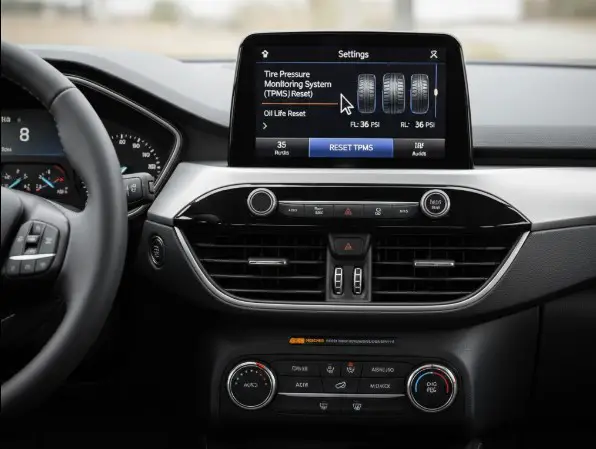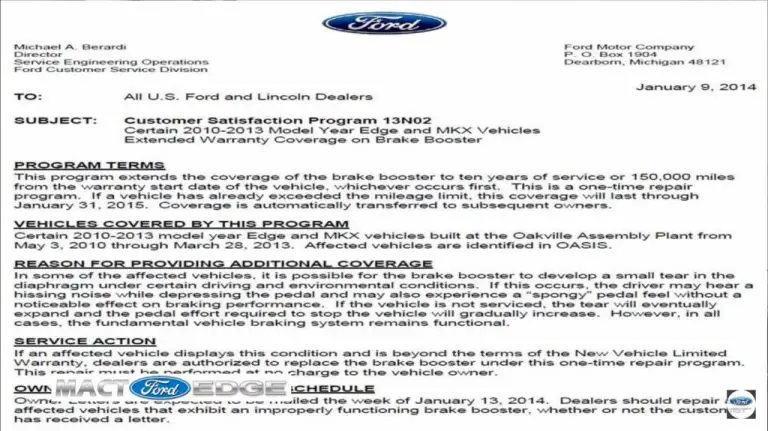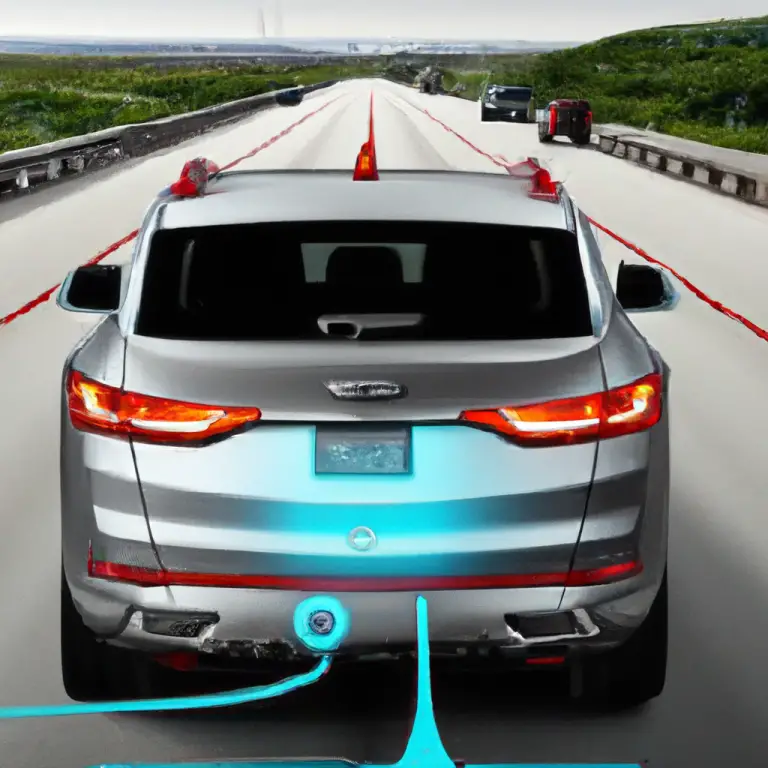Where is the TPMS Reset Button on Ford Escape? (The Surprising Answer)
If the Tire Pressure Monitoring System (TPMS) warning light has illuminated on your Ford Escape’s dashboard, one of the first instincts is to look for a simple reset button. Many online guides and forum posts suggest looking for a small button under the steering wheel or in the glove box. This search often leads to frustration, as drivers of most modern Escapes will find no such button.
This comprehensive guide will explain why that physical button is missing, how to correctly diagnose the TPMS warning, and provide detailed, step-by-step instructions to reset the light and retrain the sensors for every recent generation of the Ford Escape.
Looking for the TPMS Reset Button on Your Ford Escape?
Stop Looking. It Doesn’t Have One.
Unlike some cars, Ford Escapes don’t have a simple reset button. Instead, you need to follow a specific “relearn procedure” to reset the Tire Pressure Monitoring System (TPMS) light. This guide will show you how.
Step 1: Diagnose Your TPMS Light
Before you do anything, you must know what the light means. Its behavior tells you the exact problem.
- Check pressure on all 4 tires (and the spare!).
- Inflate to the PSI on your driver’s door sticker.
- Drive for 15-20 minutes.
- A reset will NOT fix this.
- Likely a dead sensor battery or faulty sensor.
- Visit a mechanic to scan for error codes.
Reset Methods by Escape Generation
The required reset method has changed significantly over the years. Modern Escapes almost always require a special tool.
This chart shows the shift from manual “no-tool” procedures (like ignition cycles or deflation) to “tool-required” procedures, which are dominant today.
Common Cause of Failure: Sensor Battery
A flashing light often means a sensor’s internal battery has died. They typically last 5-10 years before failing.
As sensors age, their battery life drops, leading to a system malfunction (flashing light) that a reset cannot fix.
Step 2: The Modern Relearn Procedure (Tool Required)
For most Escapes (approx. 2013+), you’ll need a “TPMS Relearn Tool” (like a TPMS19). Follow these steps after inflating all tires.
Enter Relearn Mode
Ignition ON (engine OFF). Press the hazard light button 6 times. The horn will chirp once.
Train Left Front Tire
Display shows “TRAIN LF TIRE”. Hold tool to sidewall near valve stem. Press tool button.
Wait for Chirp
The horn will chirp once, confirming the sensor is learned. The display will update.
Train Remaining Tires
Repeat the process in order: Right Front (RF) → Right Rear (RR) → Left Rear (LR).
Training Complete
After the last tire, the display will show “TRAINING COMPLETE”. Turn ignition off.
Older Models?
Some 2008-2012 models use an ignition/brake pedal sequence or a “deflation method.” These are less reliable.
Troubleshooting: Why Won’t It Reset?
If the relearn fails or the light comes back on (especially if flashing), one of these is the likely culprit.
Key Takeaways
-
🚫
No Button: Stop looking for a physical reset button. It doesn’t exist.
-
💡
Solid vs. Flashing: A solid light is a simple pressure warning. A flashing light is a system fault (like a dead sensor).
-
🔧
Tool Required: Most Escapes (2013+) require a TPMS Relearn Tool to reset the system after a tire rotation or new sensor.
-
⚪️
Check The Spare: Don’t forget! Many Escapes have a sensor in the spare tire, which can also trigger the low-pressure light.
Why You Probably Can’t Find a TPMS Reset Button
The simple answer to the core question is that the vast majority of Ford Escapes, particularly those manufactured from the 2013 model year onward, do not have a dedicated physical TPMS reset button. The idea of a physical button is a holdover from older vehicle systems. As automotive technology has evolved, manufacturers like Ford have moved away from single-function buttons in favor of integrated, software-based controls.
Instead of a simple button, the TPMS functions are now managed by the vehicle’s central computer, often the Body Control Module (BCM). Resetting the system now involves communicating with this computer through a specific sequence of actions. These modern methods can include:
- Navigating menus in the instrument cluster using steering wheel controls.
- Performing a specific sequence of turning the ignition on and off while pressing the brake pedal.
This shift from hardware to software reduces manufacturing complexity and allows for more sophisticated system diagnostics, but it can be confusing for owners accustomed to a simple button.
Crucial Distinction: Understanding a “Reset” vs. a “Relearn”
Before attempting any procedure, it is critical to understand the difference between two key terms: resetting and relearning. Using the wrong procedure for the situation will not solve the problem.
- TPMS Reset: This is a simple action to turn off the warning light after the underlying issue (usually low tire pressure) has been corrected. This is what most drivers need to do after inflating their tires.
- TPMS Relearn (or Training): This is a more involved procedure that teaches the vehicle’s main computer the new physical location of each tire pressure sensor. A relearn is absolutely necessary after rotating the tires or replacing a sensor. Without it, the vehicle may report low pressure on the wrong tire, creating a significant safety risk.
Stop! Before You Reset, Diagnose Your TPMS Warning Light
The single biggest mistake an owner can make is to immediately try to reset the TPMS light without first understanding what it means. The light is a vital diagnostic tool. The way it behaves tells a specific story about the health of the tires and the system itself.
Solid vs. Flashing Light: A Critical Difference
There are two primary ways the TPMS light will alert a driver, and they point to completely different issues.
- Solid TPMS Light: If the yellow tire icon illuminates and stays on steadily, the system is likely working perfectly. It is indicating that the pressure in one or more of your tires is significantly below the recommended level. A reset procedure should only be attempted after checking and correcting the pressure in all four tires.
- Flashing TPMS Light: If the light flashes for 60 to 90 seconds after starting the vehicle and then stays solid, this signals a malfunction within the TPMS itself.12 In this case, simply adding air to the tires or performing a reset procedure will not fix the problem. The flashing light indicates that the vehicle’s computer is not receiving a proper signal from one or more of the sensors.
The “Tire Pressure Sensor Fault” Message
On many Ford Escapes, a flashing TPMS light will be accompanied by a message on the instrument cluster that reads “Tire Pressure Sensor Fault“. This is an explicit confirmation of a system malfunction. The most common causes are a dead battery inside a sensor or a sensor that has been physically damaged, often during a tire change.
To simplify this crucial first step, use the following diagnostic table.
| TPMS Light Behavior | What It Means | Recommended First Action |
| Solid Yellow Light | The system is working correctly. One or more tires are significantly underinflated. | Find the recommended PSI on your driver’s side door jamb sticker. Use a pressure gauge to check all four tires (and the spare, if equipped) and inflate them to the correct pressure. |
| Flashing Light (then Solid) | There is a malfunction within the TPMS. A reset will not work. | The most common cause is a dead battery in one of the wheel sensors or a damaged sensor. Professional diagnosis is recommended. |
| “Tire Pressure Sensor Fault” Message | The vehicle’s computer has confirmed a specific failure in the system. | This requires a visit to a mechanic or tire shop. A sensor likely needs to be replaced and programmed to the vehicle. |
How to Reset the TPMS Light on Your Ford Escape (By Generation)
Because Ford has changed the TPMS technology over the years, the correct reset and relearn procedure depends entirely on the generation of the Escape. Attempting the wrong procedure for a given model year will be ineffective.
For 4th Generation Escapes (2020 – Present)
The latest generation of the Ford Escape has fully integrated the TPMS reset function into the digital instrument cluster menu, accessible via the steering wheel controls.
Primary Method: Instrument Cluster Menu
- Turn the ignition to the “On” position without starting the engine. For push-button start models, press the START button once without your foot on the brake.
- Use the five-way directional navigation pad on the left side of the steering wheel to scroll through the main menu on the instrument display.
- Navigate to the “Settings” menu.
- Select “Vehicle Information” or a similarly named option like “Driver Assist”.
- Scroll to find the option labeled “Tire Pressure,” “Tire Monitor,” or “Deflate Detect”.
- Press and hold the “OK” button in the center of the directional pad.
- A confirmation message, such as “Tire Pressures Set,” will appear on the screen, indicating the system has been reset to the current pressures.
Important Consideration: 2020 Model Year BCM Recall
Owners of a 2020 Ford Escape may encounter a unique and frustrating issue where the TPMS light or fault message for the rear tires will not go away, even with new sensors and correct procedures. This may be due to a specific factory recall. A number of 2020 Escapes were built with a Body Control Module (BCM) that has a mis-oriented filter, which weakens its ability to receive radio frequency signals from the rear TPMS sensors.
If a 2020 Escape has a persistent TPMS fault specifically for the rear wheels, the owner should check their Vehicle Identification Number (VIN) on the official(https://www.ford.com/support/recalls/) before paying for unnecessary sensor replacements. This simple check could save significant time and money by identifying a known defect that a dealer must fix.
For 3rd Generation Escapes (2013 – 2019)
This generation of the Escape is the primary source of confusion, as it almost never has a physical button but does not yet have the intuitive menu system of the newest models. The reset and relearn procedures are accomplished through a specific sequence of actions, sometimes called a “key dance.”
Primary Method: The Ignition & Brake Pedal Sequence
This procedure puts the vehicle into “Training Mode.” While this is technically for a full sensor relearn, simply entering and exiting this mode is often enough to reset the system after inflating the tires.
- Ensure all tires are properly inflated to the pressure listed on the driver’s door jamb sticker.
- Turn the ignition to the OFF position.
- Press and release the brake pedal once.
- Cycle the ignition from the OFF position to the RUN position three times, ending in the RUN position. (RUN is the position where the electronics and dashboard light up, but the engine is not started).
- Press and release the brake pedal once more.
- Cycle the ignition from OFF to RUN three more times, again ending in the RUN position.
- If the sequence was performed correctly and quickly enough, the horn will chirp once, and the instrument cluster will display a message like “TRAIN LEFT FRONT TIRE”.
- To simply reset the light, immediately turn the ignition OFF. This will exit the training mode, and in many cases, the TPMS light will be off the next time the vehicle is started.
Alternative Method: Hazard Light Sequence
Some owners have reported success entering training mode with a simpler method, which can be useful after a tire rotation.
- Turn the ignition to the ON/RUN position (engine off).
- Press and release the emergency flasher (hazard light) button three times in quick succession.
- The horn should sound once to confirm that the vehicle has entered training mode.
- Turn the ignition OFF to exit the mode.
For 2nd Generation Escapes & Older (Pre-2013)
These earlier models are the most likely to be equipped with a dedicated physical TPMS reset button, though its presence is not guaranteed on every trim level.
Location of the Reset Button
If the vehicle has one, the button is typically a small, unmarked black button. Check these common locations:
- On the lower dashboard panel, below the steering wheel column.
- To the left of the steering column, near the fuse panel access door.
- Inside the glove compartment.
Procedure for Using the Reset Button
- Ensure all tires are inflated to the correct pressure.
- Turn the key to the “On” position, but do not start the engine.
- Press and hold the TPMS reset button.
- Watch the TPMS warning light on the instrument cluster. Continue holding the button until the light blinks slowly three times.
- Release the button.
- Start the engine. The system may require up to 20 minutes of driving to fully recalibrate and turn the light off.
The Full TPMS Relearn Procedure: Training Your Sensors
A simple reset is not sufficient in all situations. A full “relearn” or “training” procedure is required to make the vehicle’s computer recognize the position of each sensor. This is mandatory in the following scenarios:
- After rotating the tires.
- After replacing one or more TPMS sensors.
- After swapping between summer and winter tire sets that have their own sensors.
The reason a relearn is so important is that the Escape uses a direct TPMS, where each sensor has a unique identification code. The vehicle’s computer maps each specific ID to a physical location (e.g., Left Front, Right Front). When tires are rotated, that map becomes incorrect. If a tire that was originally on the front left is moved to the rear right, the computer will still associate its ID with the front left position. A low-pressure warning for that tire will incorrectly direct the driver to check the wrong tire, defeating the purpose of the system.
Relearn Procedure Without a Special Tool (The Deflation Method)
This method can be performed by any owner without special equipment, but it requires deflating and then re-inflating the tires.
- Begin by putting the vehicle into “Training Mode” using the Ignition & Brake Pedal sequence detailed in the section for 3rd Generation Escapes. The horn will chirp, and the message “TRAIN LEFT FRONT TIRE” will appear.
- Go to the driver’s side front tire. Begin letting air out of the tire. Continue until the vehicle’s horn beeps once. This single beep confirms that the computer has successfully registered that sensor’s ID for the Left Front position.
- The message on the dashboard will now change to “TRAIN RIGHT FRONT TIRE.”
- Move to the passenger’s side front tire and repeat the process, letting air out until the horn beeps.
- Continue the procedure for the remaining tires in the correct sequence: Right Rear, followed by Left Rear. The dashboard display will guide the process.
- After the final (Left Rear) tire is trained, the horn may sound twice, and the display will show “TRAINING COMPLETE”.
- Turn the ignition off to exit the mode.
- Crucial Final Step: Use a reliable tire gauge and air compressor to re-inflate all four tires to the correct pressure specified on the door jamb sticker.
Relearn Procedure With a TPMS Tool
For those who perform their own tire rotations or swap winter tires, investing in a low-cost TPMS activation tool is highly recommended. These tools, often sold as “TPMS relearn tools” for Ford vehicles, make the process significantly faster and easier by eliminating the need to deflate the tires.
- Put the vehicle into “Training Mode” using the same Ignition & Brake Pedal sequence.
- Go to the driver’s side front tire. Hold the TPMS tool against the tire’s sidewall, near the valve stem.
- Press the button on the tool. It emits a low-frequency signal that instantly activates the sensor, forcing it to transmit its ID to the vehicle’s computer. The horn will beep almost immediately to confirm the pairing.
- Follow the prompts on the dashboard, moving to the Right Front, Right Rear, and Left Rear tires, activating each one with the tool.
- Once “TRAINING COMPLETE” is displayed, turn the ignition off. The entire process can be completed in less than 60 seconds. For more technical details on how these systems operate, resources from specialists like(https://www.ateq-tpms.com/en-us/article/tpms-information-ford-escape/) offer in-depth information.
Advanced Troubleshooting: When the Light Still Won’t Turn Off
If the TPMS light remains on after correcting the tire pressure and attempting the proper reset procedure, there are a few more steps to try before heading to a professional.
- The Drive Cycle Reset: Sometimes, the sensors simply need time and a clear signal to update the main computer. Drive the vehicle continuously at a speed of 50 mph or higher for at least 10 minutes. The next time the car is started, the light may be off.
- The Battery Disconnect (Hard Reset): This is a last-resort DIY option. With the vehicle off, use a wrench to disconnect the positive battery cable. Then, turn the key to the “On” position and press the horn for about three seconds. This helps drain any residual power from the vehicle’s electronic modules. Reconnect the battery. This will often clear stubborn warning lights but may also erase radio presets and other memory settings.
- Diagnosing a Failed Sensor: If the light is flashing, it almost certainly indicates a sensor failure.
- Battery Life: The batteries inside TPMS sensors are sealed and cannot be replaced. The entire sensor unit is a single component with a typical lifespan of 7-10 years. If an Escape is approaching this age, a flashing light is a strong indicator that a sensor’s battery has died.
- Physical Damage: The sensors are located inside the wheel and can be fragile. They are sometimes broken by inexperienced technicians during a tire mounting or dismounting process. If the TPMS light begins flashing immediately after a visit to a tire shop, it is highly probable that a sensor was damaged.
When to See a Professional: If the light is flashing or if all DIY methods have failed to extinguish a solid light, it is time to visit a reputable tire shop or a Ford dealership. They possess advanced diagnostic scan tools that can communicate directly with the TPMS module. These tools can read fault codes, check the battery level of each individual sensor, and test their signal strength to pinpoint the exact cause of the problem.
For an idea of potential costs, resources like(https://repairpal.com/estimator/ford/escape/tire-pressure-monitoring-system-tpms-sensor-replacement-cost) can provide estimates for sensor replacement in a specific area. This can be a valuable part of your Ford Escape’s regular maintenance schedule.
Frequently Asked Questions (FAQs)
Q: Where is the recommended tire pressure for my Ford Escape?
A: The correct pressure is not printed on the tire’s sidewall. That number indicates the maximum pressure the tire can hold. The Ford-recommended pressure for your specific vehicle is found on a sticker located on the driver’s side door jamb or door pillar. Always inflate tires to this “cold” pressure, meaning before the vehicle has been driven.
Q: Can I drive with the TPMS light on?
A: It is strongly discouraged. If the light is solid, it means a tire is dangerously underinflated, increasing the risk of a blowout and severely compromising the vehicle’s handling and braking performance. If the light is flashing, the system is faulty. While the vehicle can be driven, the tires should be checked manually with a gauge as soon as possible, and the system should be repaired promptly.
Q: Why did my TPMS light come on in cold weather?
A: This is a very common occurrence. Air contracts as it gets colder. For every $10^{\circ}F$ drop in ambient temperature, tire pressure can decrease by about 1 PSI. A sudden cold snap can easily cause the pressure to drop below the TPMS warning threshold. This is not a system fault; simply add air to bring the tires back to the recommended pressure.
Q: How long do TPMS sensor batteries last?
A: TPMS sensor batteries are designed to last for a long time but are not indefinite. The typical lifespan is between 7 and 10 years. Since the battery is sealed inside the sensor, the entire sensor unit must be replaced when the battery dies.
Q: Do I need to replace all four sensors at once?
A: While it is possible to replace only the single failed sensor, it is often recommended to replace all four at the same time, especially if the vehicle is over 7 years old. All the sensors are the same age and have been subjected to the same conditions. If one has failed, the others are likely near the end of their service life. Replacing all of them at once, especially when getting new tires, can prevent repeated trips to the shop in the near future.
Q: Can I use aftermarket TPMS sensors on my Ford Escape?
A: Yes, many high-quality aftermarket sensors are available. However, it is absolutely essential to ensure they are compatible with the specific model year of the Escape and operate on the correct frequency. Ford vehicles typically use a 315 MHz frequency. Installing an incompatible or incorrect frequency sensor will guarantee a “Tire Pressure Sensor Fault” message.
Conclusion: Keeping Your TPMS in Check
While the search for a physical TPMS reset button on a Ford Escape may be fruitless, the process of managing the system is straightforward once the correct procedures are understood. The key takeaways are to first diagnose the warning light’s behavior—solid for low pressure, flashing for a system fault—and then to apply the correct, generation-specific procedure. For newer models, this means using the instrument cluster menu, while for slightly older models, it involves the ignition and pedal sequence.
Understanding the critical difference between a simple reset after inflation and a full sensor relearn after a tire rotation is essential for the system to function correctly. The Tire Pressure Monitoring System is not a convenience feature; it is a crucial piece of safety equipment. Maintaining proper tire pressure ensures optimal vehicle handling, braking distance, fuel economy, and tire longevity. Taking a few minutes to properly address a TPMS warning is a fundamental aspect of responsible vehicle ownership and addressing other common Ford Escape issues.







